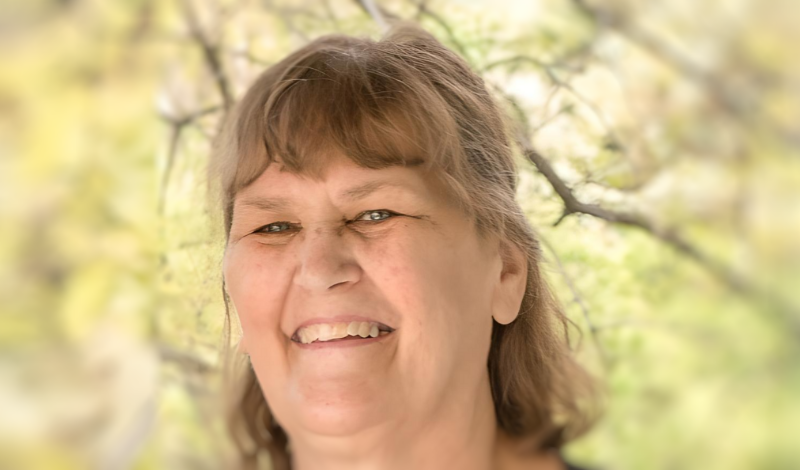
Beating Fluid on Lungs: Marge’s Energy Triumph
Iowa special education teacher Marge McArtor thought nothing of the dry cough she developed in December 2019. With no other symptoms, she managed the cough by ensuring she has a steady supply of LifeSavers. In the short run, it quelled the cough. It wasn’t long before she found it difficult to walk between classrooms. She found herself seeking a place along the short walk to sit or to lean against the wall. On the Monday after Christmas, Marge went to see her primary care doctor.
When her doctor listened to her chest they detected a lot of troubling noises in her lungs. Marge was sent directly to the emergency room where she was immediately admitted. Once inpatient, the medical team suspected it was a heart issue – congestive heart failure to be precise. Four days of extensive testing later, with most studies focussed primarily on her heart, Marge was sent home with no clear diagnosis.
Fluid on Lungs Key Reason for Difficult Breathing
Just four days later, Marge was having so much difficulty breathing and was feeling so unwell, her PCP sent her back to the emergency room where, again, she would be admitted for further testing. This time, scans and xrays showed that her lungs were cloudy and the doctors thought that perhaps it was pneumonia. The wrinkle in this theory was the fact that Marge’s shortness of breath was so pronounced. It was then that the team opted to drain the fluid from her lungs.
“I felt so much better after they drained my lungs. It was like having a heavy blanket lifted off my chest. I hadn’t really realized just how painful it was.”
Armed with the pleural fluid, the doctor sent it out for testing. Due to her age (she was 57), her otherwise good health, and the fact that she has never been a smoker (something we know is not necessarily a good indicator of developing lung cancer), lung cancer was not of top concern. And then it was.
Marge was still in-patient when the hospitalist – with whom she had been interacting for the past several days – came into her room. Without making eye contact, he delivered the news:
“I am sorry to tell you this, and we did not expect it, but you have stage 4 adenocarcinoma. We will send you for a PET scan and then send in hospice.”
Marge was in shock. As she lay perfectly still for the 25-minute PET scan, she was panicked, the harsh words of the hospitalist ringing in her head.
“All I could think about was that both of my daughters were pregnant, I was 57 years old and I was going to die; why else would they be sending hospice in?!”
A Diagnosis of Cancer in the Pleural Fluid
Soon after Marge returned to her room, the doctors came in to share the results. They explained to Marge that in scan-speak, anything that lights up pink is bad. Surprisingly, though, her scans were not very pink at all, rather there was just one spot on each lung, indicating that the bulk of the cancer was in the pleural fluid. This provided good news and bad news: it was essentially confined to the fluid, but this meant it was inoperable. The very good news, however, was that the fluid specimen has also been tested for biomarker indicators and came back positive for the ALK+ mutation. This was invaluable information for Marge’s treatment moving forward.
Now with an official diagnosis, Marge was able to move from the hospitalist to her own pulmonary oncology team. Fortunately, this physician had a far superior bedside manner and was kind and empathetic:
“It’s not the news we wanted, but here’s what we are going to do about it…”
For starters, Marge immediately began taking oral targeted therapy designed exclusively for ALK+ patients. She has found the side effects – a low heart rate and some fatigue to be manageable. In addition, this treatment choice was preferable to issues she has been told about with chemotherapy treatment.
Taking on Lung Fluid Care at Home
For the next several months, Marge went to a cath lab to have her lungs drained. In short order, she was well versed enough on the procedure that she was able to have a pleural catheter put in, allowing her to take care of it in the comfort of her home. She reports that it was “no big deal” and quickly became adept at reporting the quantity, color, weight, and density of the drainage. She would then call the data into the doctor’s office and would review and discuss the findings with the team.
Over time, the catheter drains started loculating (the localized failure of a region to drain fluids, resulting in an enlarged mass), causing issues with the draining process. This raised concerns over the efficacy of the drains, leading to the need for what Marge “affectionately” refers to as the Drano treatment where her fluids would be drained manually. As of the summer of 2023, Marge is stable.
At the outset of her lung cancer journey, Marge had become encumbered by shortness of breath and exhaustion. She was unable to do much of anything other than move from one seated position to another. To accommodate and support her struggles, her husband set up a series of chairs spaced 5’ apart between their home and Marge’s beloved garden enabling her to enjoy its beauty.
Targeted Therapy Changes Marge’s Fears
Thanks to the effectiveness of recent targeted therapies, Marge is now able to walk two miles each day – except for during her recuperation from recent knee replacement surgery. She is enjoying retirement, and, perhaps most wonderful; spend time with her new grandchildren – Crue, Lexi, and Chase. – Thanks to lung cancer research, her fear that she would not live long enough to meet them has been relieved. Going from the scare of fluid on lungs to walking and playing with her grandchildren has changed Marge.
“My lung cancer diagnosis changed the way I look at things, my entire perspective of time is different. I’ve been given the opportunity to play with my grandchildren, write stories down including ones about when I was a little girl as well as, discuss the hard things like hospice houses and my funeral. I am active, continue to build my stamina, and my lung cancer, even though it is stage 4, remains stable.”

